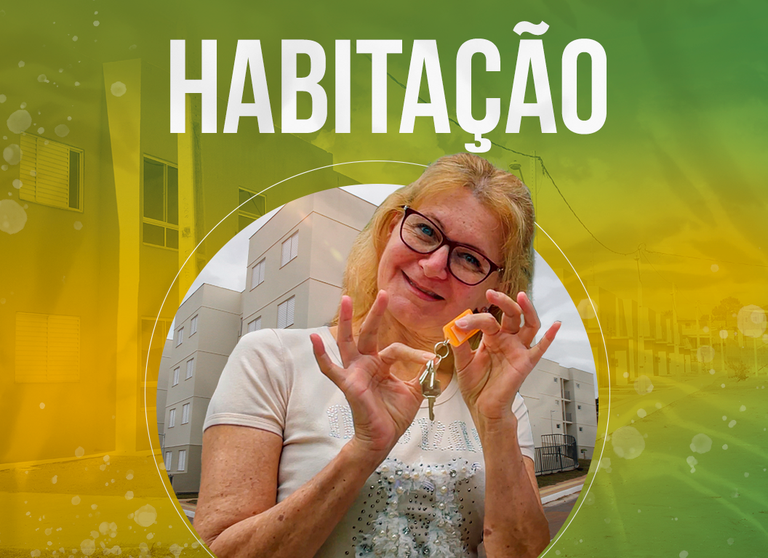GREEN AND YELLOW HOUSE PROGRAM
Share: Share via Facebook Share via TwitterLink to Copy to Clipboard
Posted on 03/24/2022 17:41
Since 2019, the Federal Government has guaranteed their own home to more than 4.8 million people
Casa Verde e Amarela also guaranteed the lowest interest rates in history for real estate credit: up to 4.25% in the North and Northeast regions and 4.5% in the other regions - Photo: MDR
A public policy that would combat the housing deficit in all its components and facilitate the population's access to decent housing. Based on these premises, the Federal Government launched, in August 2020, the Casa Verde e Amarela Program. In addition to the production of subsidized housing, the program introduced new modalities, such as land tenure regularization, housing improvement and social leasing.
Casa Verde e Amarela also guaranteed the lowest interest rates in history for real estate credit: up to 4.25% in the North and Northeast regions and 4.5% in the other regions. In addition, the program changed the form of remuneration of the operating agent, reducing the portion of the bank spread (difference between the amount paid by the bank to account holders and the amount charged in credit operations) paid by the Severance Indemnity Fund (FGTS) financial agents operating the program, without compromising the sustainability of operations.
These and other reformulations of the public housing policy made it possible for the Federal Government, through the Ministry of Regional Development (MDR), to deliver more than 1.2 million homes in all regions of the country between 2019 and 2022 – an average of 1.1 thousand a day. As a result, more than 4.8 million people benefited from home ownership.
Another priority of the Federal Government was to resume the housing works that were paralyzed. Since 2019, there have been around 130,000 homes, including 3,000 in Residencial Mato Grosso I, II and III, in São Luís, Maranhão. The project, contracted in 2013, underwent five reprogramming in the period between 2014 and 2019 until the work resumed in 2021, with a contribution of another R$ 90.2 million from the Federal Government. At the end of the interventions, the total investment will be R$ 254.8 million.
Since 2019, federal investment in the housing area was R$ 149.2 billion, including resources from the General Budget of the Union and the FGTS for housing financing to individuals.
projects delivered
Among the completed projects is the Aluízio Campos Housing Complex, in Campina Grande, Paraíba. In all, 4,100 housing units were delivered in 2019, with 3,012 houses and 1,088 apartments. With a contribution of R$ 262.5 million from the Residential Leasing Fund (FAR), around 16 thousand people benefited from their own home.
Another project delivered, in August 2021, was the Residencial Oiticica II, in the city of Maceió, in Alagoas. The condominium received a federal investment of R$ 40 million, of which 97% has been transferred since 2019. About 2 thousand people have benefited from their own home when they receive the keys to the development.
Extended benefits
After a year of creating Casa Verde e Amarela, the MDR advanced in proposals to combat the housing deficit, adapting to the new challenges imposed by the scenario brought about by the covid-19 health crisis, such as increased prices of inputs and fiscal restrictions.
The Federal Government also increased the ceiling on the value of properties that can be classified as popular housing. In municipalities with 50,000 to 100,000 inhabitants, the limit was increased by 15%. Between 20 thousand and 50 thousand inhabitants, 10%. In municipalities with a population of less than 20 thousand inhabitants, there was no change. The other cities – including the capitals and respective metropolitan regions – had an increase of 10%.
In 2022, still faced with the difficulty of lower-income families accessing Casa Verde e Amarela, the MDR again negotiated adjustments with the FGTS Board of Trustees. In this way, it obtained approval of the subsidy increase. The range of families that receive the maximum complement discount is now adopted for borrowers with a monthly income of up to R$1,650, instead of the previous R$1,450. The end of the curve, which establishes the families that receive the minimum discount, was also expanded from R$3,350 to R$3,700.
Another benefit approved and expected to come into effect in mid-April was the change in the classification of families in Group 1, whose maximum monthly income increases from R$2,000 to R$2,400. This lowers the final interest rate for these borrowers. Previously, for this public, which belonged to Group 2, interest rates were 4.75% for the North and Northeast regions and 5% for the other regions. Now, the percentages will be, respectively, 4.25
.

 Mr. Alessandro Jacob speaking about Brazilian Law on "International Bar Association" conference
Mr. Alessandro Jacob speaking about Brazilian Law on "International Bar Association" conference